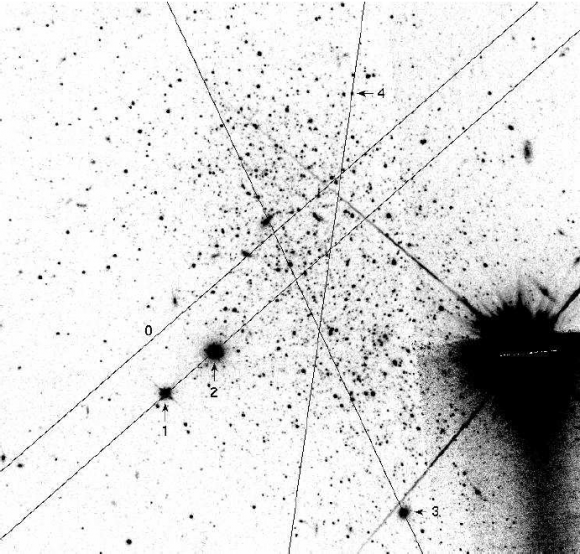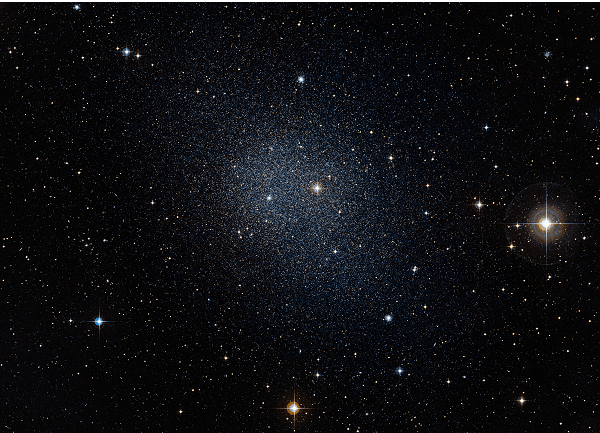As part of the Local Group, a collection of 54 galaxies and dwarf galaxies that measures 10 million light years in diameter, the Milky Way has no shortage of neighbors. However, refinements made in the field of astronomy in recent years are leading to the observation of neighbors that were previously unseen. This, in turn, is changing our view of the local universe to one where things are a lot more crowded.
For instance, scientists working out of the Special Astrophysical Observatory in Karachai-Cherkessia, Russia, recently found a previously undetected dwarf galaxy that exists 7 million light years away. The discovery of this galaxy, named KKs3, and those like it is an exciting prospect for scientists, since they can tell us much about how stars are born in our universe.
The Russian team, led by Prof Igor Karachentsev of the Special Astrophysical Observatory (SAO), used the Hubble Space Telescope Advanced Camera for Surveys (ACS) to locate KKs3 in the southern sky near the constellation of Hydrus. The discovery occurred back in August 2014, when they finalized their observations a series of stars that have only one ten-thousandth the mass of the Milky Way.
Such dwarf galaxies are far more difficult to detect than others due to a number of distinct characteristics. KKs3 is what is known as a dwarf spheroid (or dSph) galaxy, a type that has no spiral arms like the Milky Way and also suffers from an absence of raw materials (like dust and gas). Since they lack the materials to form new stars, they are generally composed of older, fainter stars.

- Image of the KKR 25 dwarf spheroid galaxy obtained by the Special Astrophysical Observatory using the HST. Credit: SAO RAS
In addition, these galaxies are typically found in close proximity to much larger galaxies, like Andromeda, which appear to have gobbled up their gas and dust long ago. Being faint in nature, and so close to far more luminous objects, is what makes them so tough to spot by direct observation.
Team member Prof Dimitry Makarov, also of the Special Astrophysical Observatory, described the process: “Finding objects like Kks3 is painstaking work, even with observatories like the Hubble Space Telescope. But with persistence, we’re slowly building up a map of our local neighborhood, which turns out to be less empty than we thought. It may be that are a huge number of dwarf spheroidal galaxies out there, something that would have profound consequences for our ideas about the evolution of the cosmos.”
Painstaking is no exaggeration. Since they are devoid of materials like clouds of gas and dust fields, scientists are forced to spot these galaxies by identifying individual stars. Because of this, only one other isolated dwarf spheroidal has been found in the Local Group: a dSph known as KKR 25, which was also discovered by the Russian research team back in 1999.
But despite the challenges of spotting them, astronomers are eager to find more examples of dSph galaxies. As it stands, it is believed that these isolated spheroids must have been born out of a period of rapid star formation, before the galaxies were stripped of their dust and gas or used them all up.
Studying more of these galaxies can therefore tell us much about the process star formation in our universe. The Russian team expects that the task will become easier in the coming years as the James Webb Space Telescope and the European Extremely Large Telescope begin service.
Much like the Spitzer Space Telescope, these next-generation telescopes are optimized for infrared detection and will therefore prove very useful in picking out faint stars. This, in turn, will also give us a more complete understanding of our universe and all that it holds.
Further Reading: Royal Astronomical Society

